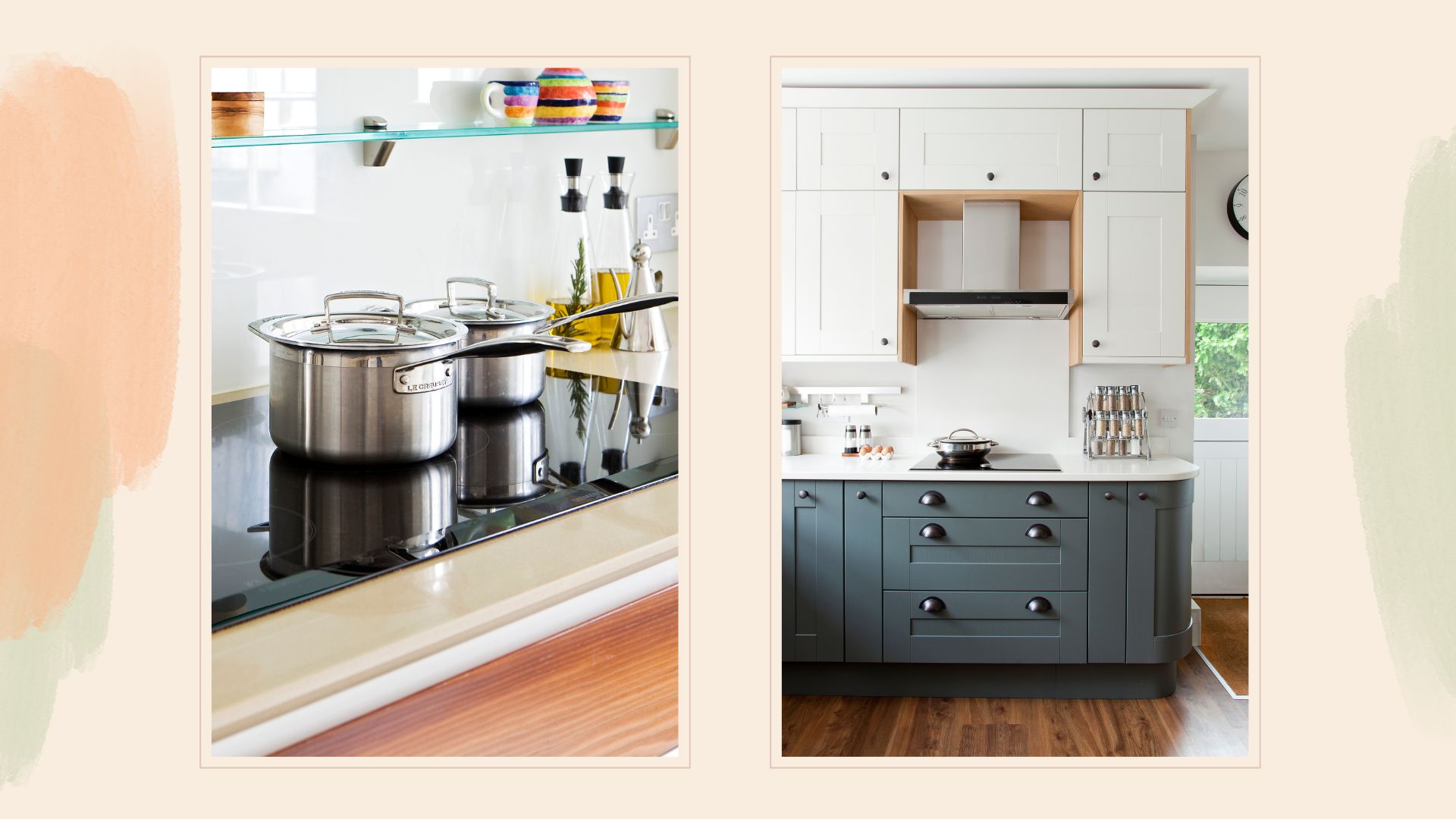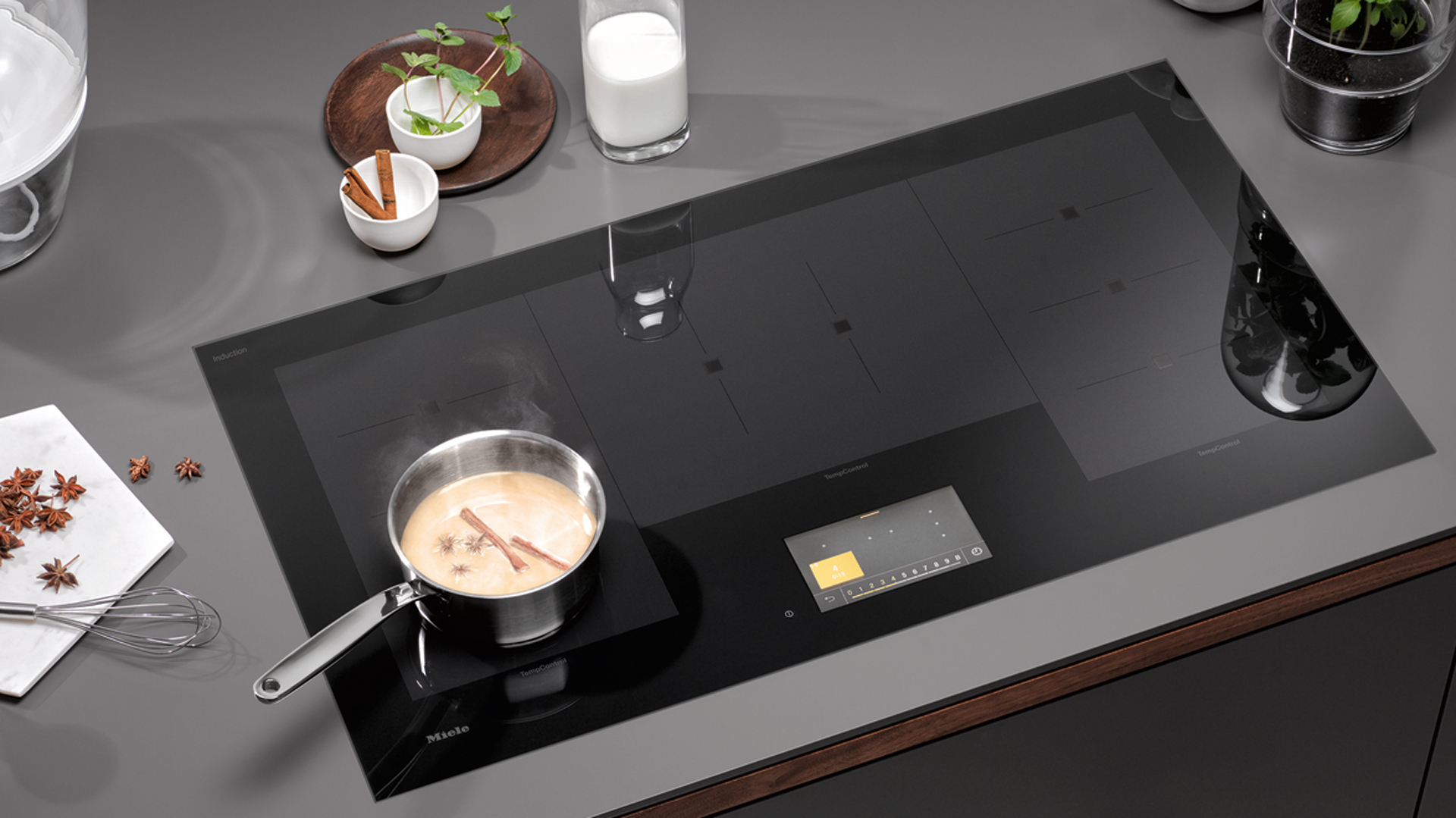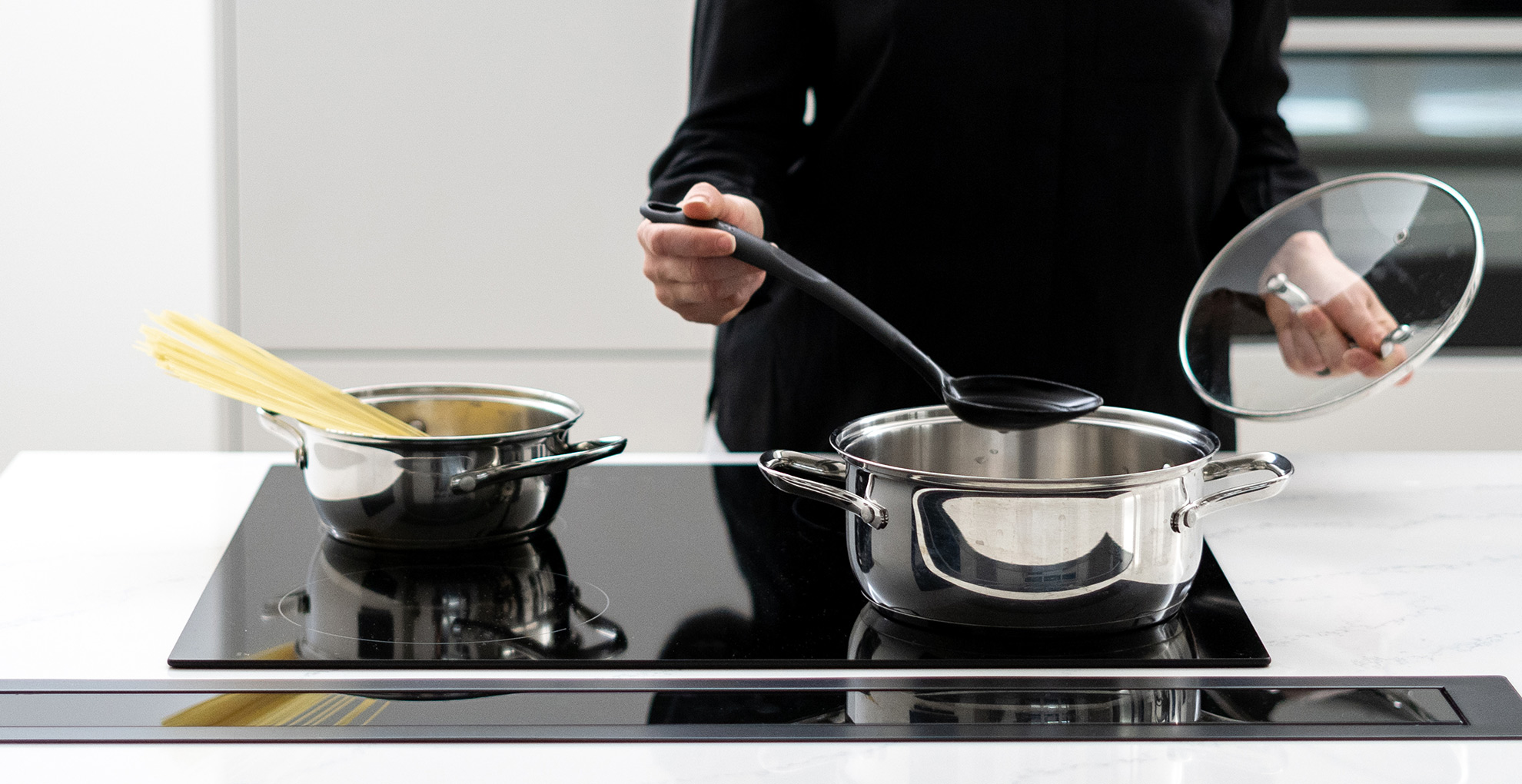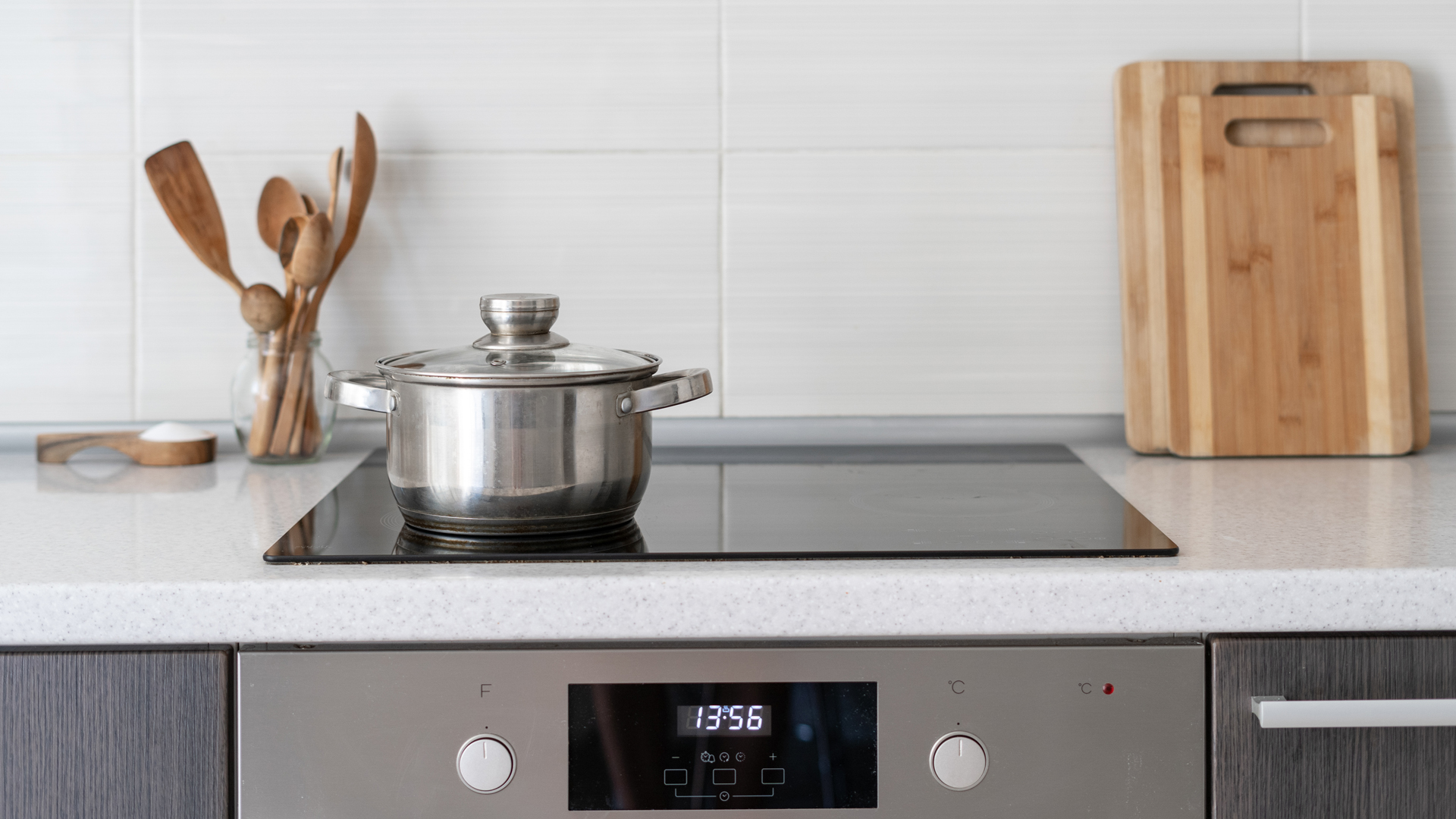
If you’re considering updating your kitchen with a brand new hob, you may well be weighing up whether to buy an induction hob vs an electric hob, wondering which is best. Should you go for the higher-tech option or should you stick with the tried-and-tested one? We consider the pros and cons of both to determine which is best for you.
Induction hobs, including even the best portable induction hobs, promise faster cooking, better energy efficiency, and easier cleaning than traditional electric hobs, but they can cost a lot more money, not to mention that you may need to buy the best induction pans that operate better with induction cooking.
We explore the main difference between the two modern hobs, the costs of buying and running, along with the benefits of cooking with each option and everything you need to know about induction hobs.
Induction hob vs electric hob: what are the main differences?
Induction hobs and electric hobs are less different than, say, induction hob vs gas hob. However, despite being similarly powered by electric mains, they are significantly different in use.
So, how do induction hobs work that differs from electric hobs? “Induction hobs work by generating a magnetic field that heats the pan directly, rather than the hob surface itself," explains Darren Watts, a kitchen design expert at Wren Kitchens. This results in significantly faster heating and greater energy efficiency, as very little heat is lost."
"The surface remains relatively cool to the touch, making induction hobs safer, particularly for families with children. Many models also come with advanced safety features such as auto shut-off and child locks. Cleaning is simple, as spills don’t get baked onto the surface. However, they do require induction-compatible cookware, which can add to the cost, and the hob itself typically starts at around £250."
"In contrast, electric ceramic hobs are often more affordable, with entry-level models coming in under £200," says Darren. "They feature a smooth glass surface that's easy to clean and provide straightforward control through buttons or dials.
"While they can look sleek and modern, ceramic hobs heat up and cool down more slowly than induction models, making them less efficient. The glass surface also becomes very hot during use and can be prone to chipping if not treated carefully. Despite this, they don’t require special pans and still offer a reliable cooking experience."

"Electric and induction hobs look very similar on the surface; however, they are very different appliances," explains Sophie Lane, product training manager at Miele. "The main difference between them is the way they create heat."
"Electric hobs use conventional radiant heat," Sophie explains, "the heat is transmitted using conduction. When turned on, its heating elements will heat the active ring and its surrounding surface. The heat then transfers from the surface of the hob to the pan and then to the food."
How can you tell the difference between induction and electric hobs?
They feel similar in style, but induction hobs and electric hobs have very distinct differences once you know what to look for. "With telling the differences visually, both hobs can look quite similar, often featuring a smooth glass surface with touch controls or dials," Darren explains.
"However, electric ceramic hobs typically show glowing red heating zones when switched on, while induction hobs remain dark and only activate when they detect a suitable pan. If you’re unsure, the user manual or product model details will clearly state the hob type.”
Is induction cheaper than electric?
"Although induction hobs tend to be more expensive in terms of upfront costs, they are considerably more efficient and cost-effective compared to electric hobs in the long term as they use less energy and are cheaper to operate," explains Les Roberts, the content manager at energy bill experts Bionic.
"Induction hobs make use of electromagnetic energy so they only work when a pan makes contact with the surface and an alternating electric current is passed through the copper coils under the surface," Les explains.
"Placing a magnetised pan on the top creates a magnetic field that heats the pan up. This reduces heat loss as only the surface of the pan is heated, not the entire hob surface."
"Once the pan is removed, the current is cut off instantly and the surface cools very rapidly, increasing the efficiency as the heat is not lost to the surrounding environment, unlike electric hobs. Around 90% of the heat generated by an induction hob is transferred to food for cooking, whilst with a traditional electric hob this number is only 70%, due to heat loss."

Given the efficient nature of an induction hob, the contents of your pan will heat much quicker, cutting down on cooking time and therefore cutting down on costs per use. Meaning it does prove cheaper than running an electric hob saving energy for your home.
"There's no need to waste electricity boiling your pasta water in the kettle before transferring it to the pot, as the water will boil in around half the time, compared to an electric hob."
Although Les does warn, "Do bear in mind, you may have to buy new pans if you invest in an induction hob because only magnetic pans can be used, which is an extra cost to consider. Stainless steel, cast iron, carbon steel, and a limited amount of metal cookware, coated in ceramic can be used."
Induction hob vs electric hob: initial cost and running costs
"Induction cooking is much quicker than electric or gas cooking, and since you’re only heating the pan, it’s also much more energy efficient," explains Penelope Jacobs, kitchen expert at MyJobQuote.
"Induction hobs use around 90% of the heat generated for cooking. Electric hobs use around 70% of the generated heat for cooking. This is quite a difference in terms of energy efficiency."
Because induction hobs are more efficient than electric hobs, almost all of their energy gets turned into usable heat, so in that sense, they're more cost-efficient. But the annual savings aren’t dramatic, think around £20 a year unless you’re cooking for an army, so it all depends on how much you cook, and if you need multiple hobs. Induction hobs can heat food almost twice as fast as electric hobs, so they also carry that benefit.
Similar to calculating how much it costs to run an air fryer, think about the cost upfront and then the cost per use. "The upfront costs of induction hobs tend to range from around £250-£2,000, with the average price falling at around £500. Electric hobs are cheaper to buy upfront, with prices ranging from around £200-£700 and the average price falling at around £250," explains Penelope.
"If you cook a lot or if you tend to use multiple hob rings at once when cooking, it would be worth spending the extra money on investing in an induction hob as the energy savings will easily pay for themselves before it’s time to replace your hob. You’ll also benefit from faster cooking times. If you only cook occasionally and you’re on a budget, an electric hob is likely the better choice."
Induction hob vs electric hob: do you need new pans?
An electric hob will work with all of your existing pots and pans, from stainless steel pans to your best wok, although if you’re coming from gas and have a round-bottomed wok, you’ll need to swap it for a flat-bottomed one. Other than that, everything will work fine, and your pan storage situation needn't change too much.
With an induction hob, you need magnetic cookware sets, and that rules out copper, glass, and aluminium unless they have a magnetic plate in the bottom. If in doubt, grab a fridge magnet and put it at the bottom of the pan. If it sticks, the pan should be OK. To ensure you have the right cookware for the job, you might be best investing in one of the best induction pans, too.
Induction hob vs electric hob: what are the key benefits of both?
The main benefit of a standard electric cooker is that it’s cheap to buy and therefore a better option for those on a budget. You can also use most pots and pans on them, which alleviates the need to buy any new cookware.
The key advantage of an induction cooker is that it cooks more efficiently and quickly, delivers finer control of very low and very high temperatures, and is much easier to clean. An induction hob doesn’t get hot, it warms up the pots and pans via magnetism, so food is much less likely to get burnt on – so cleaning stainless steel pans feels easier, no more wondering how to clean a burnt pan.
"There are numerous benefits to this direct method of heating the base of a pan," says Sophie of the mechanisms of induction hobs. "Firstly, it does not produce any heat losses – in contrast to appliances such as electric hobs, whose ceramic glass needs to be heated before the pan on top can start heating up. As a result, induction technology can achieve time savings of up to 50% compared with conventional electric hobs. This, in turn, can lead to approximately 25% lower energy requirements."

Another benefit of cooking on induction is the safety aspect. "Induction is safer than standard types of technology too, for reasons including the fact that no energy is released until the pan is placed on the hob," Sophie explains. "This means that there is no risk of burns if a hob is accidentally switched on without a pan on it."
"Depending on the sizes of the cooking zones, induction can make it possible to use a range of different pan sizes without the need to activate or deactivate additional heating circuits, something that is required in the case of electric hobs," says Sophie.
"The ceramic glass also stays relatively cool on induction hobs, making cleaning easier: burnt-on food is much quicker to remove and the direct control of the energy supply can even prevent the contents of a pan from boiling over.” Just ensure you read up on how to clean a glass-topped stove to avoid damaging the surface.
Induction hob vs electric hob: what are the key downsides?
- The glass surfaces of induction hobs are easily scratched and can be smashed, and despite their energy-saving credentials, they are more expensive. These costs rise again when you consider that you'll need to use compatible cookware.
- In contrast, electric hobs are cheaper and are fairly brutish things – slower to heat up, slower to adjust, and slower to cool down. It's also easier to overcook things as you simply don't have the same precise temperature controls as you do with induction hobs. Finally, although they can be more hardy, they're also often trickier to clean than induction hobs.
Induction hob vs electric hob: will you need to rewire?
Both kinds of electronic-powered cookers require hard wiring by an electrician; you can’t just plug them into a wall socket, so factor in those costs when buying either model. The ceramic electric hob requires a 6.6KW connection with a 30 amp fuse, while the same firm’s induction hob needs a 7.4KW supply with a 32 amp fuse.
Induction hob vs electric hob: Our verdict
If money’s no object, we’d pick the induction hob every time – very much the same conclusion we came to in the induction hob vs gas hob debate too.
Induction hobs feel a little like cooking with magic because the hob itself doesn’t heat up, and yet it can deliver impressive heat incredibly quickly to heat the pans for more efficient cooking.
"I like to use induction hobs as an energy-efficient and smart way to cook," says Jennifer Bedloe, group food director at w&h. "They heat pans quickly using a magnetic field and cool down almost instantly at the touch of a button. I think it gives you more control compared to non-induction electric hobs and they're easy to keep clean and create extra counter space in the kitchen."
If you’re a serious steak searer or stir-fryer, you’ll love what it can do, although if you’re new to induction, you’ll have to rethink your favourite recipes because everything cooks so much more quickly. It’s a shame that you can’t use every kind of pan on it, but that’s a sacrifice we’re willing to make.
In this guide, 'electric hob' refers to old-style solid-plate electric hobs and more modern ceramic electric hobs, too.







